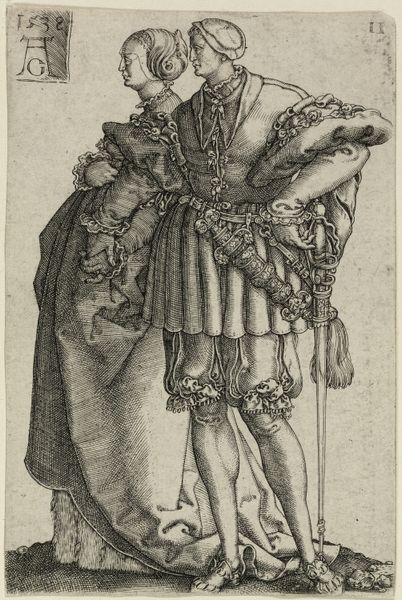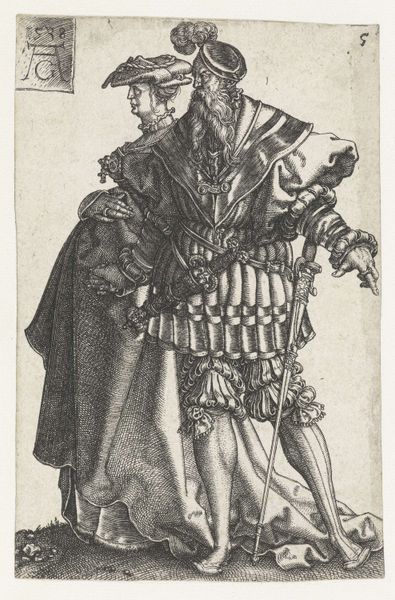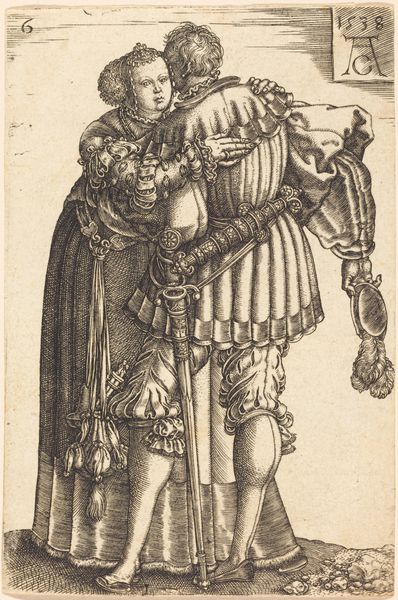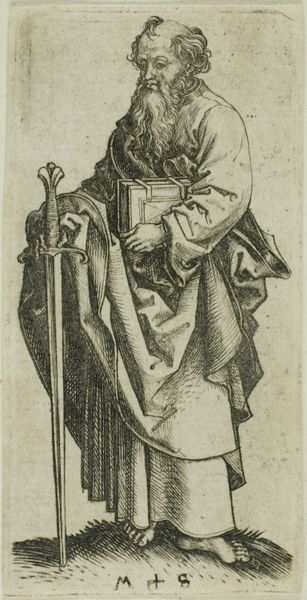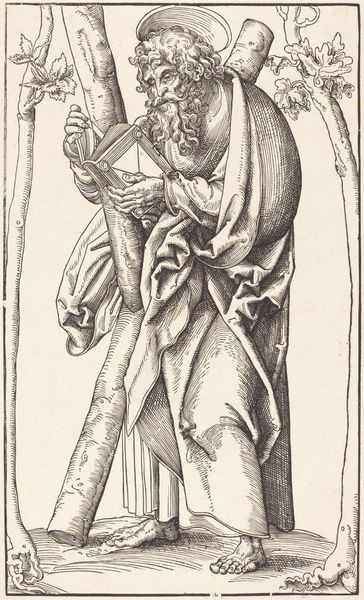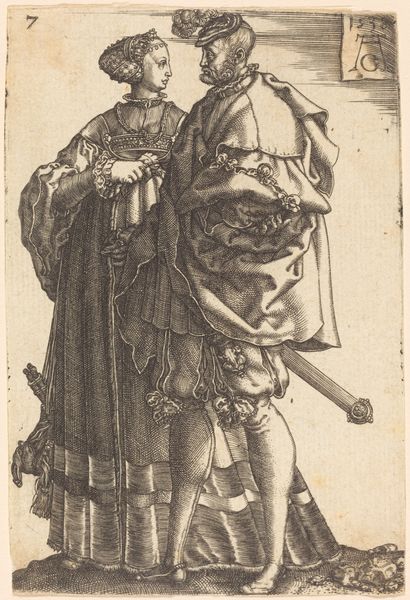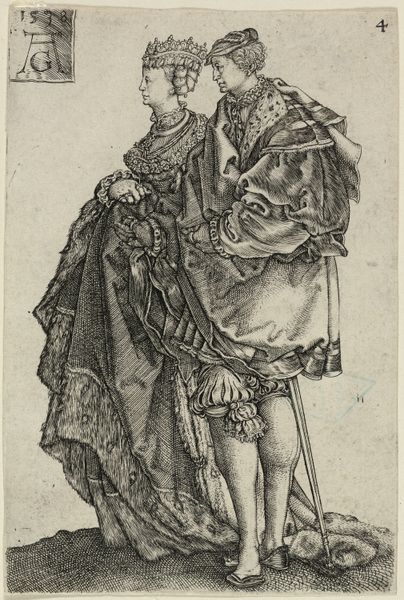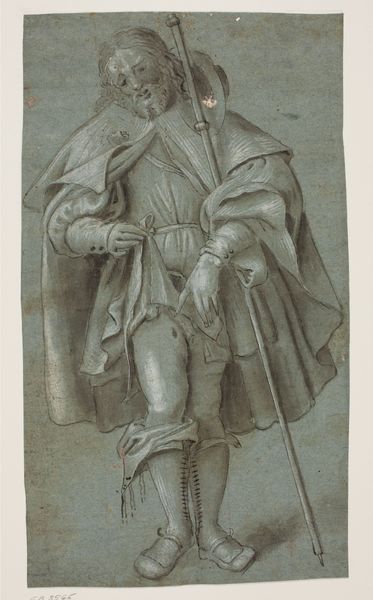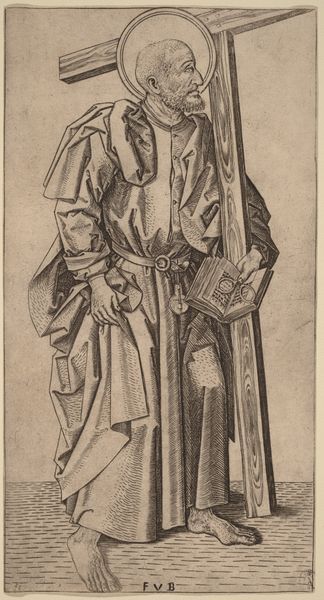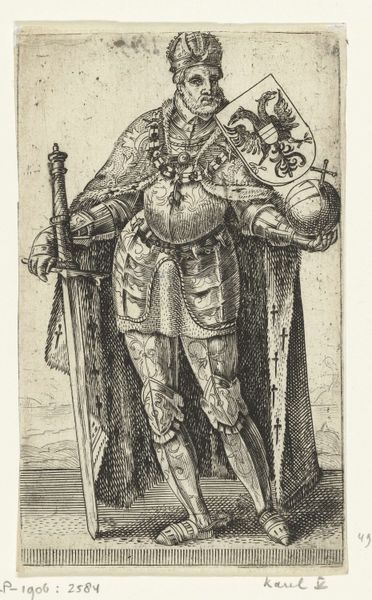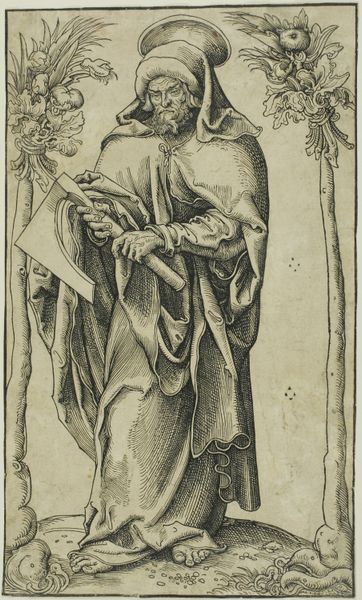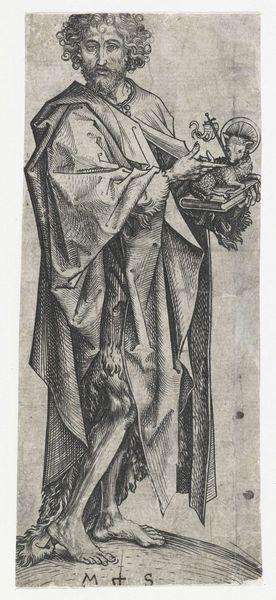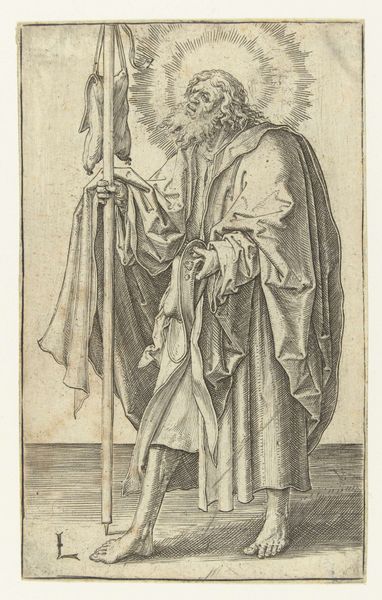
print, engraving
#
portrait
# print
#
mannerism
#
figuration
#
form
#
line
#
history-painting
#
northern-renaissance
#
engraving
Dimensions: height 116 mm, width 78 mm
Copyright: Rijks Museum: Open Domain
Curator: Here we have "Dansend paar no. 9," or "Dancing Couple No. 9," an engraving made in 1538 by Heinrich Aldegrever, now held in the Rijksmuseum collection. Editor: It strikes me immediately how the close hatching defines the three-dimensionality of the clothing. And they are absolutely dripping in fabric and jewelry; I can almost feel the weight of their status pressing down. Curator: Aldegrever was part of the German Little Masters, a group known for their small but highly detailed prints, often exploring secular themes after the Reformation. This image fits perfectly. We see an idealized, perhaps aspirational image of the emerging middle class asserting itself. Editor: Absolutely. Consider the tight composition, and the masterful control of the line; the man's puffed sleeves mirror the woman's skirt. And yet, despite this formal symmetry, the facial expressions give an impression of stiffness and perhaps constraint; the heavy clothes constricting even more than supporting the pair. Curator: It’s also fascinating how the artist utilizes the graphic arts medium to promote social behavior through the dissemination of normative fashion styles of the elites. Note, for instance, the sword of the male figure is as prominent as his marital status; both are symbols of power in that era. Editor: I appreciate how this artwork highlights, using its limited, almost austere palette, the texture and weight of these clothes. Aldegrever emphasizes materiality, and creates almost sculptural forms simply through varied marks. Curator: Indeed, these prints helped to disseminate not only style, but also conceptions of class and social standing far beyond their original context. The ability of printmaking to replicate images contributed heavily to standardized portraiture, a crucial element for both trade and political maneuver. Editor: Seeing the world captured so effectively using so few means—it allows us to see the dancing couple through a particularly detailed, almost mathematical, lens. The reduction allows greater formal visibility. Curator: Ultimately, the work leaves me reflecting on how images actively create and enforce identities, rather than just mirror them. Editor: For me, I am drawn into the meticulous artistry, how mere lines generate palpable form and material substance—a testament to visual communication.
Comments
No comments
Be the first to comment and join the conversation on the ultimate creative platform.
